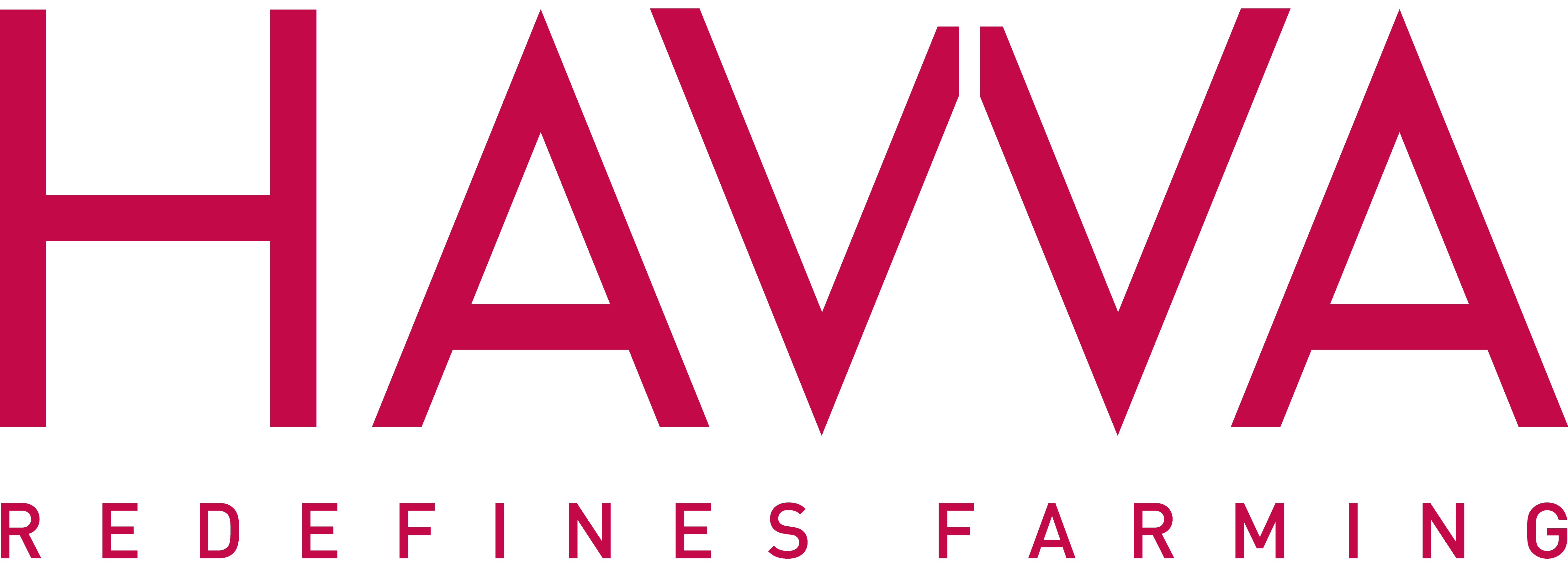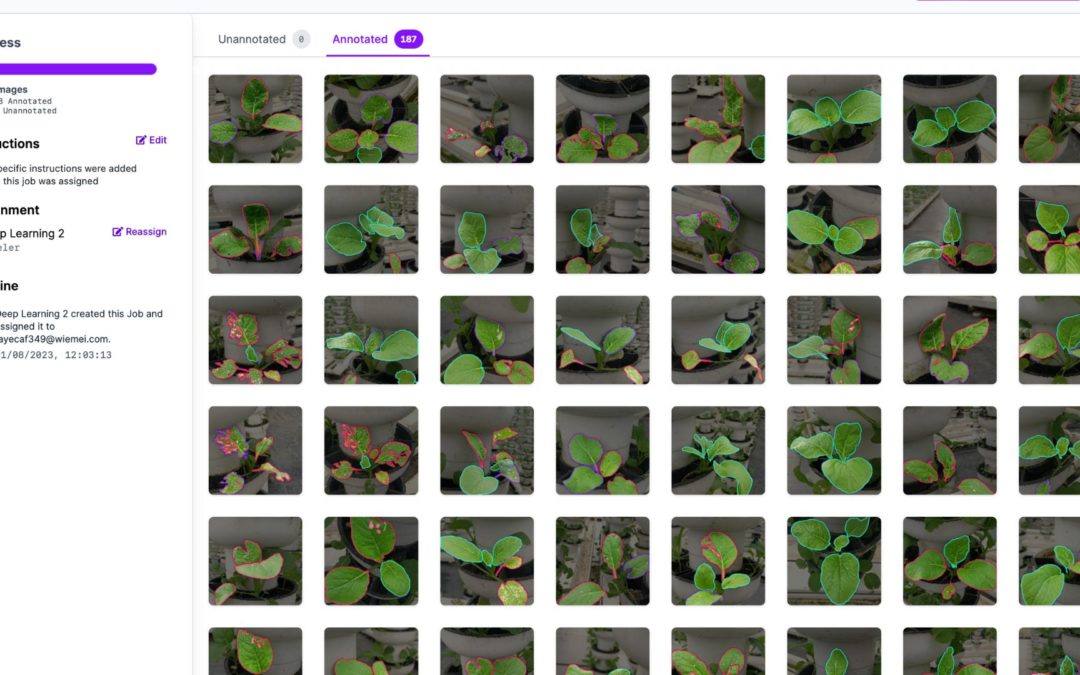At HAVVA Agrotech, our commitment to innovation and sustainable farming practices has led us on an extraordinary deep-learning journey. This journey promises to revolutionize how we nurture and cultivate crops.
Objectives and Current Pursuits
Our expedition began with a clear aim: to harness the power of deep learning in revolutionizing the entire farming process. Our strategy reflects our unwavering belief that technology can play a transformative role in ensuring abundant and healthy harvests, while minimizing harm to the environment.
In the current phase of our deep learning venture, our focus is on three pivotal stages that have the potential to redefine how we comprehend and optimize plant growth and currently we are focusing on phase 1 and phase 2.
Phase 1: Examining various crop types
Our initial phase centers around training our AI to expertly differentiate between healthy and unhealthy vegetables. This intricate process involves meticulously examining various crop types, including choy sum, curly dwarf pak choy, kailan, wong king pak choy, and xiao bai cai. Furthermore, our AI learns to make these distinctions by closely inspecting the leaves of each plant, ensuring accurate identification.
The dedicated team in Manong collaborates closely with our IoT engineer to execute this phase with precision. Data labeling and annotation form the bedrock of this process. Striving for utmost accuracy, our Manong team captures images of the afflicted vegetables to construct an extensive dataset. Besides, data labeling involves categorizing each type of crop, while data annotation takes it a step further by pinpointing and marking specific attributes. This concerted effort contributes to monitoring the growth of plants and the timely detection of crop stress and disease.

Phase 2: Plant Inspection for Health and Vitality
Manong team carefully examines each crop on the farm, paying close attention to the leaves to determine their condition. They specifically look out for issues like plant disease, fungal infection, pest problems, and nutrient deficiency. They meticulously observe for signs of discoloration, wilting, or other indicators that may signal plant distress. Additionally, they also check for large holes in leaves, which is one of the most obvious signs of garden pests. If the leaves have large holes, it’s a sign that pests have been munching on them. To investigate further, they flip the leaves over to check for bug eggs. When a disease attacks a plant, it becomes easily visible. Growth might slow down, the plant could become spindly, leaves may yellow, develop white powdery blotches, or develop spots. Besides, affected leaves might eventually fall off.
These visible changes in the plant are known as “symptoms” of a disease. For bacteria to cause disease in a plant, they need to invade the plant tissue and multiply. Bacterial pathogens can enter plants through wounds caused by things like bad weather, humans, tools, insects, and more. They can also enter through natural openings in the plant, like leaf scars. Nutrient deficiency occurs when a plant doesn’t have enough of an important nutrient it needs to grow. Without these essential nutrients, plants won’t grow well and will show various symptoms to express the deficiency.

Phase 3: Addressing Pest Challenges and Nutrient Imbalances
In the third phase, our focus turns to tackling pest challenges and nutrient imbalances. Therefore, our AI extends its understanding to various pest issues that can afflict our crops. These include fungal infections like rust, rot, and wilt, which can severely impact plant health and quality. Additionally, the threat posed by pests like caterpillars and grasshoppers is addressed. These insects consume leaves and stems, posing a significant threat to the well-being of our crops. Most importantly, our AI is trained to recognize signs of pest damage through images, allowing for early intervention to prevent extensive harm.
Regarding nutrient imbalances, our AI delves deep into recognizing deficiencies in nitrogen, iron, magnesium, zinc, calcium, and potassium. By analyzing images and annotations, our AI can recognize subtle symptoms of these deficiencies. For instance, a lack of nitrogen may lead to yellowing of lower leaves and slowed growth. Similarly, insufficient magnesium might manifest as yellow or white regions between the veins of older leaves, potentially progressing to decay. Iron deficiency causes yellowing between the veins, with the veins possibly turning brown and leaves curling or falling prematurely. Certainly, our AI leverages these insights to identify and address nutrient deficiencies early, contributing to healthier crops.



In conclusion:
As we gear up for future phases, we are excited to share our plans for expanding the capabilities of our HAVVA AI across various facets of agriculture. This progress holds the potential to usher in a new era of precision agriculture, where AI serves as a strong ally to farmers. Stay tuned as we continue to advance on our deep learning journey. With every stage, we inch closer to a future where AI and smart farming seamlessly converge to create a sustainable and productive agricultural domain.
Come and check out where you can purchase HAVVA-grown vegetables!
HAVVAponics is a soil-free farming system where plants grow in nutrient-rich water with fish. This symbiotic relationship creates a closed-loop ecosystem, where the plants purify the water for the fish, and the fish provide essential nutrients for the vegetables. With HAVVAponics technology, we bring you the freshest and pesticide-free produce straight from our eco-friendly farms. Embrace a healthier lifestyle and support environmental sustainability by choosing HAVVA-grown vegetables for your family. Taste the difference and order now!
Grow vegetables at home without soil.
If you are interested in growing your own fresh and safe vegetables at home, HAVVA does provide a ready-made home system for beginners to grow vegetables at home with the help of our expert customer support team. We do provide lifetime customer support to guide you no matter if it’s a home system or planting questions, our team is ready to assist you.
Follow us and stay tuned to our new updates on our social media!

